Stone: The ancient material making a comeback
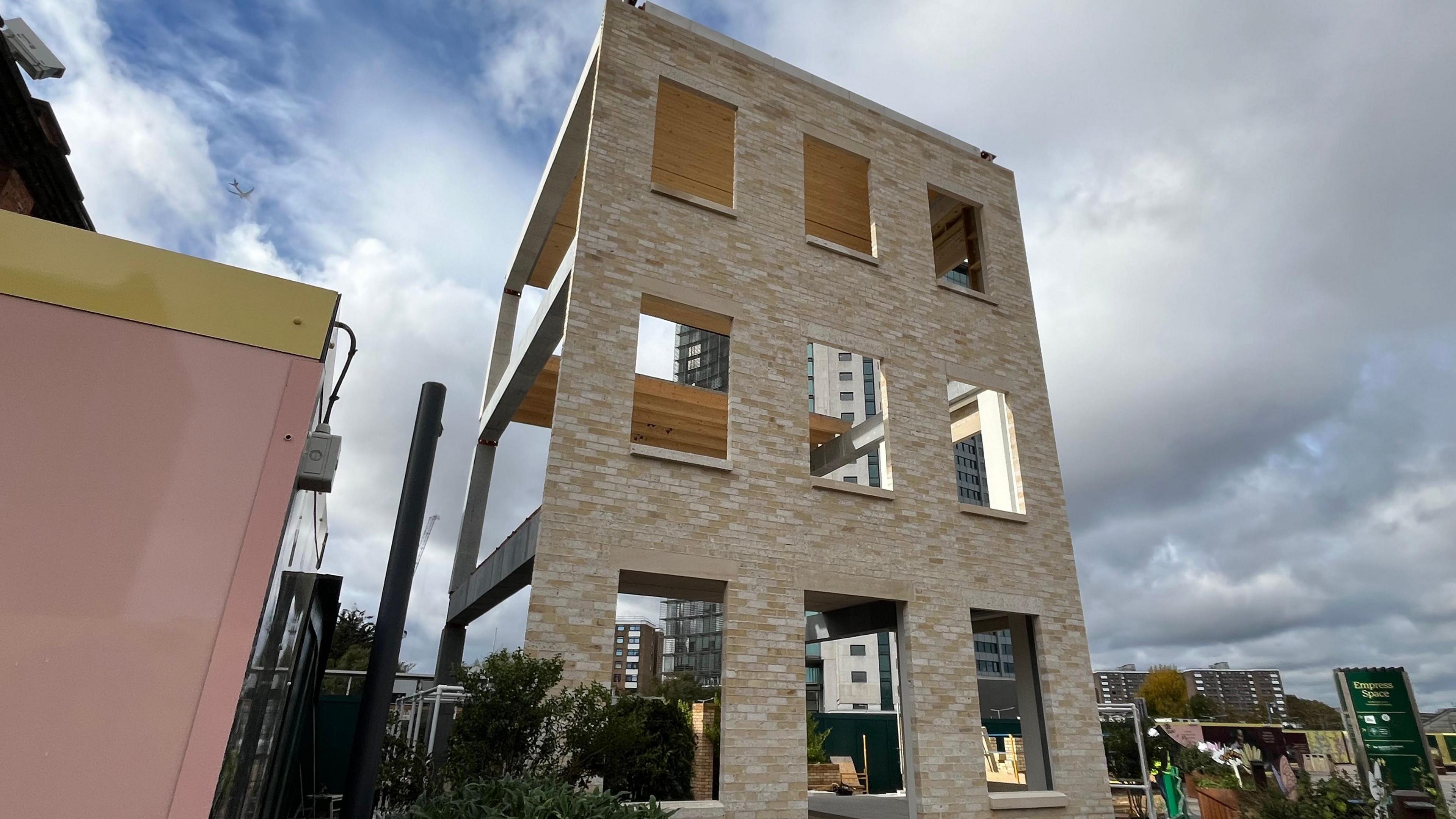
It is hoped the Stone Demonstrator will encourage builders to switch to stone as a building material
- Published
The newest structure in Earls Court looks like something from a bomb site. Empty windows and missing floors, like the remnants from The Blitz.
But it is a ground-breaking attempt to turn back time in the construction industry.
Just in front of the entrance to The Greatest Showman, the building is made of an old material that has - to some extent - been forgotten as a main building material.
It has a much lower carbon footprint than modern materials like clay bricks, concrete and steel.
Stone.
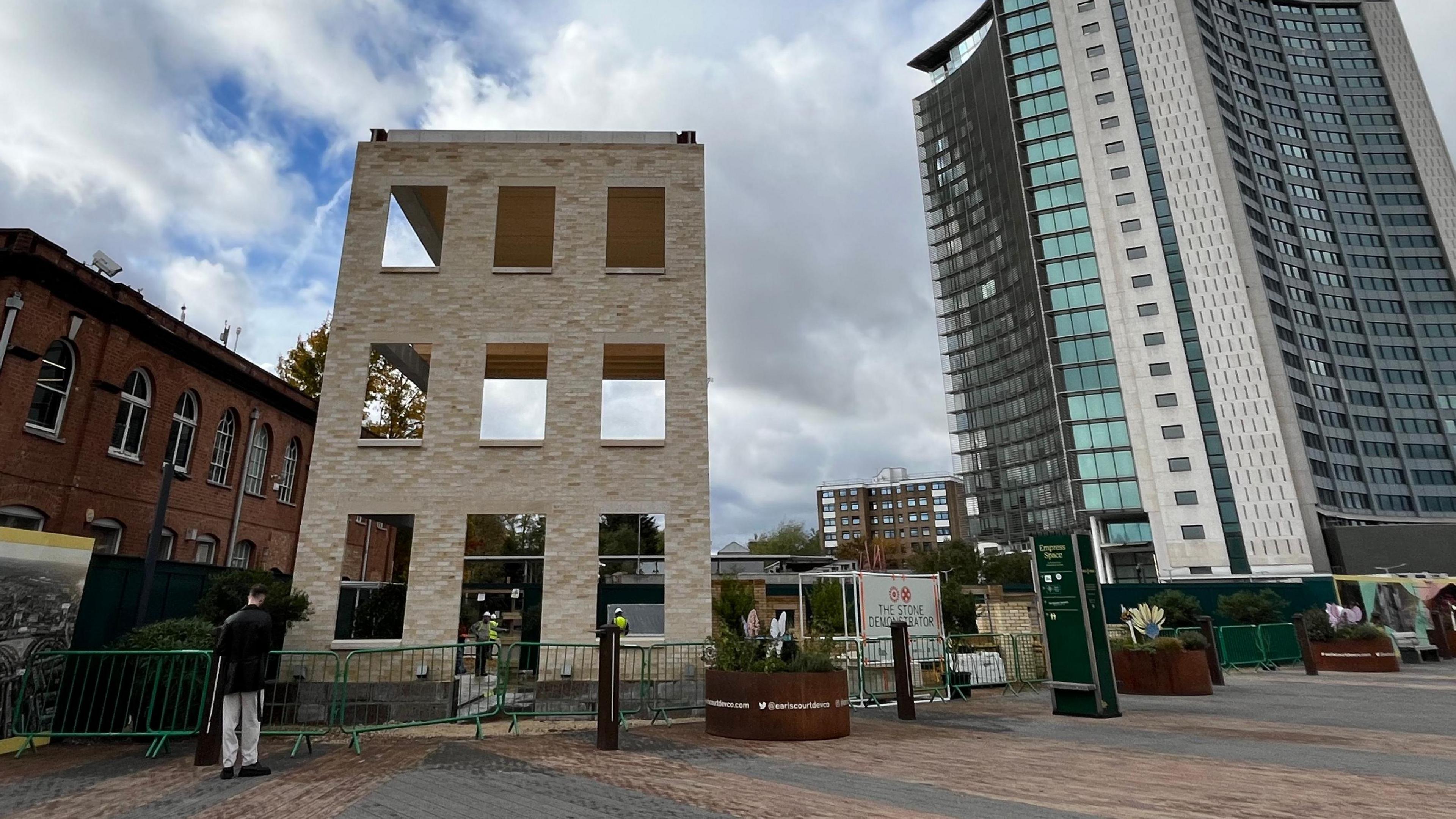
The structure is on the site of the new Earl's Court development
A project from the Design Museum, with funding coming from the government, it's hoped the Stone Demonstrator will encourage builders to switch to stone as a building material.
Justin McGuirk, the director of Future Observatory at the Design Museum, external said the construction industry needed to reduce its emissions.
"You can build with natural stone in a way that saves about 90% of the carbon emissions compared to if you are building with steel or reinforced concrete.
"Construction is a huge emitter of carbon and the government wants to build lots of homes so we need to find ways that don't damage the planet so much.
"This is one solution that we are testing."
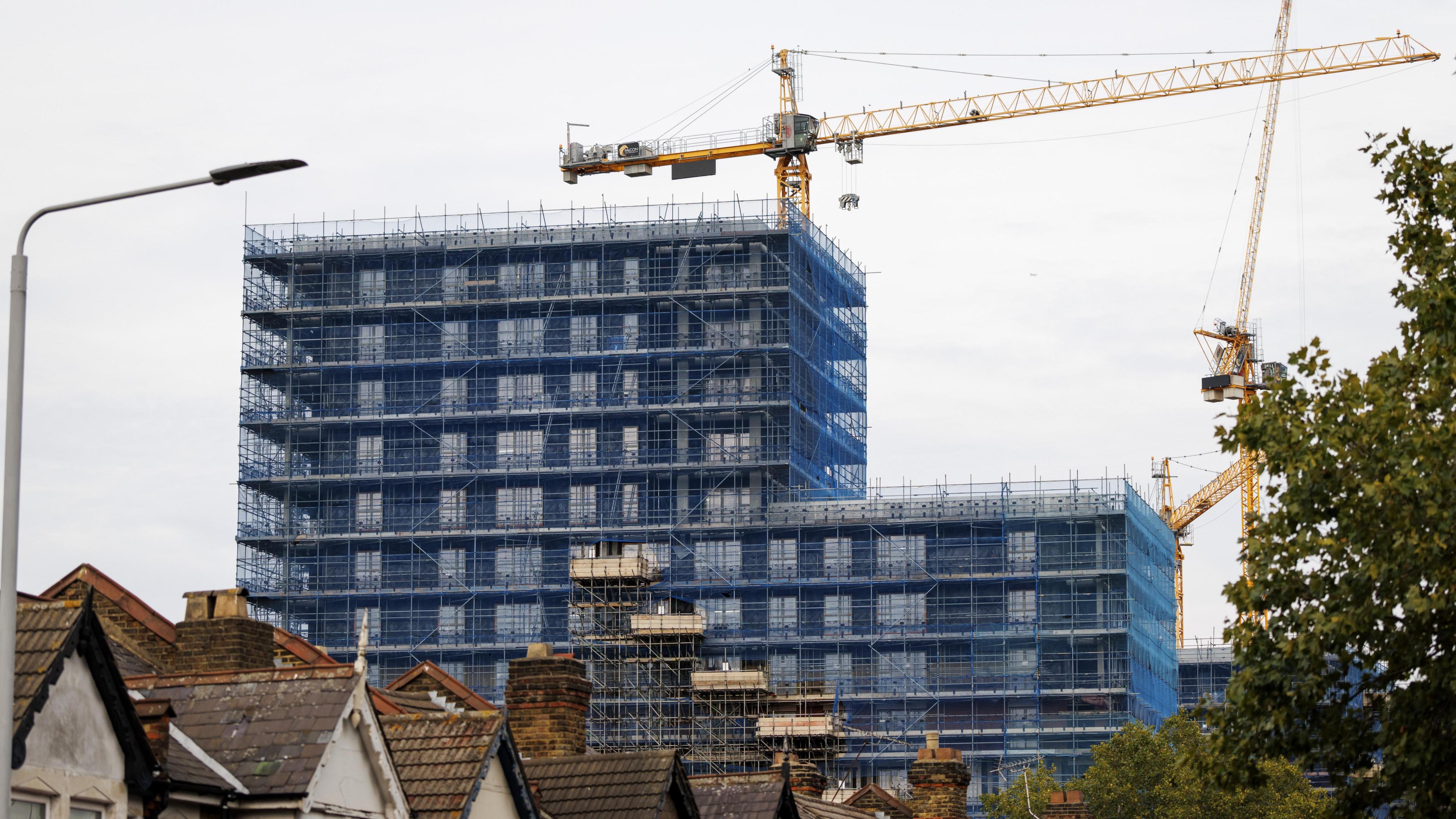
The government wants to build 1.5 million new homes by 2029
The Design Museum estimated that an equivalent structure to the stone house, but using a steel frame with a brick façade, would emit 262,870kg of carbon dioxide (CO2).
A frame made of reinforced concrete with a brick façade would emit 252,633kg of CO2.
The Stone Demonstrator produces only 6,443kg of CO2 – less than 3% of the others.
The stone is cut from quarries and in this case was shaped and designed by The Stonemasonry Company in Rutland.
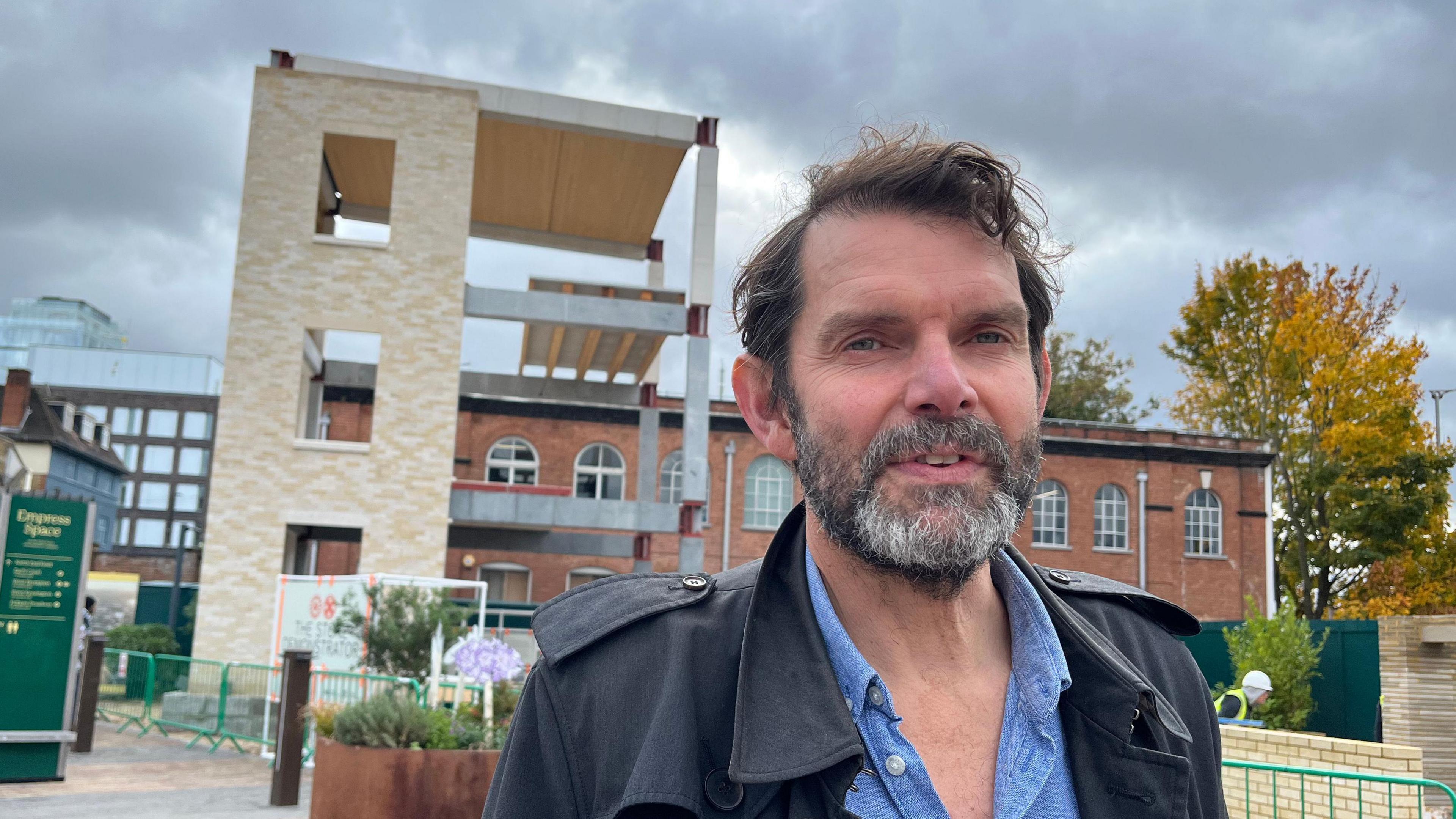
Steve Webb is the engineer for the project
Engineer for the project, Steve Webb, said stone could be a viable alternative to concrete and is "technologically achievable".
"There's a lot of prior investment in fossil fuel infrastructure, there's a lot of prior investment in the concrete industry and the steel industry.
"It has a huge head start against a new technology but I think with relatively little investment this can be industrialised and it can be a really economic and succinct way of building and without using fossil fuels."
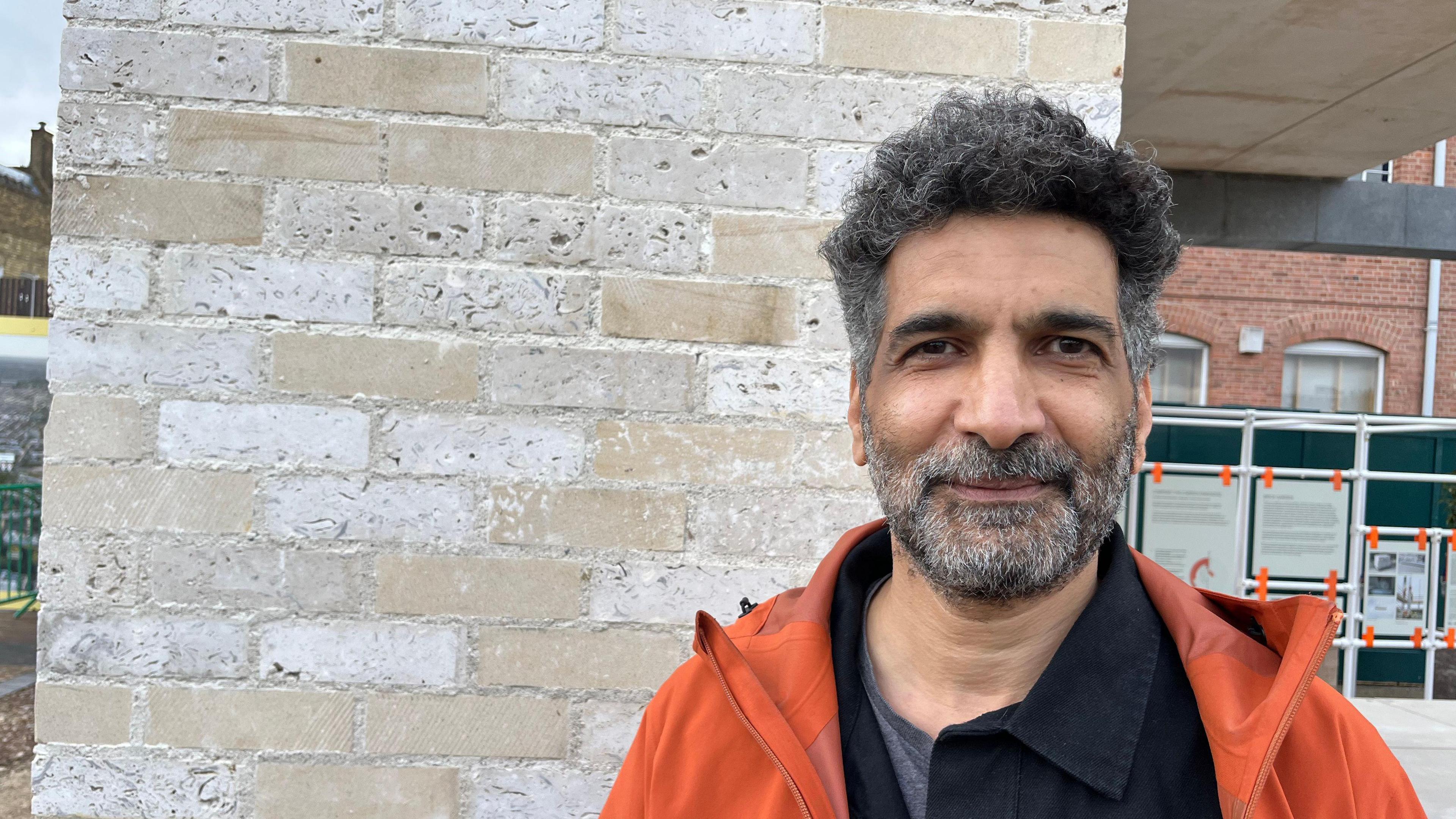
Amin Taha is from Groupwork who are architects for the project
Architect for the project, Amin Taha from Groupwork, said: "Hopefully it looks totally standard.
"It's a standard brick isn't it? But this brick is made of stone. Out of all the stone in the country. So it comes in different colours and textures. The key point here is this is 98% lower in its embodied carbon than fired clay because it's simply out of the ground."
"Even using diesel equipment to cut it out of the ground, it's 98% lower in carbon.
"Clay bricks need to go in an oven and need to be heated.
"So it's about lowering the embodied carbon of construction, back to where we were about 200 years ago."
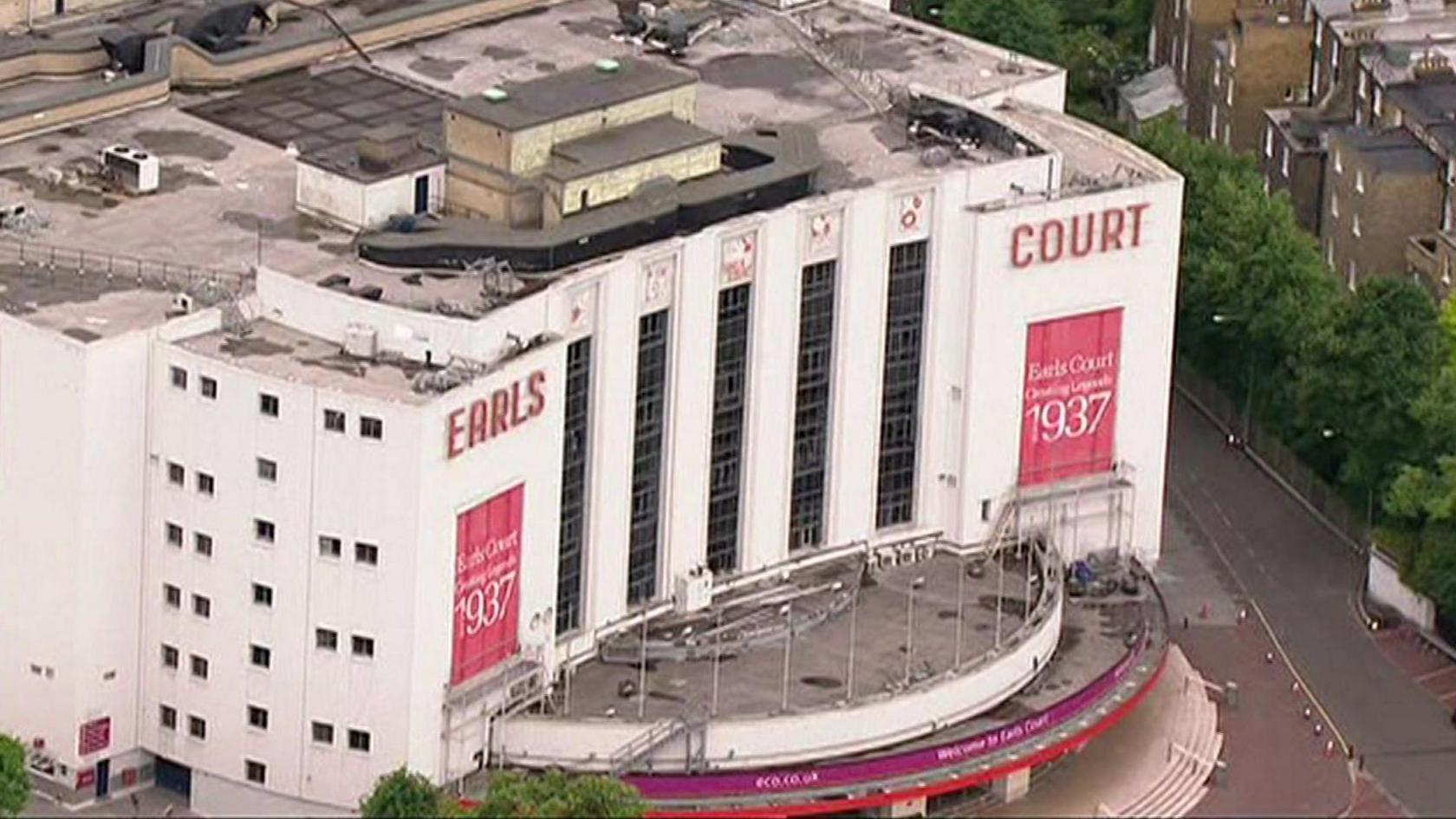
The stone structure is on the site of the demolished exhibition centre
The site used to be home to the Earls Court Exhibition Centre and will soon be redeveloped.
Rebecca Paczek, from the Earls Court Development Company, said the site was "a really important part of the future of London".
She added: "You are looking at 4,000 homes, 12,000 jobs, 2.5 million square feet of work space.
"Looking at how to go beyond net zero, really looking at the future trends, future sustainable ways of developing through the built environment, are really important parts of how we see the future of Earl's Court."
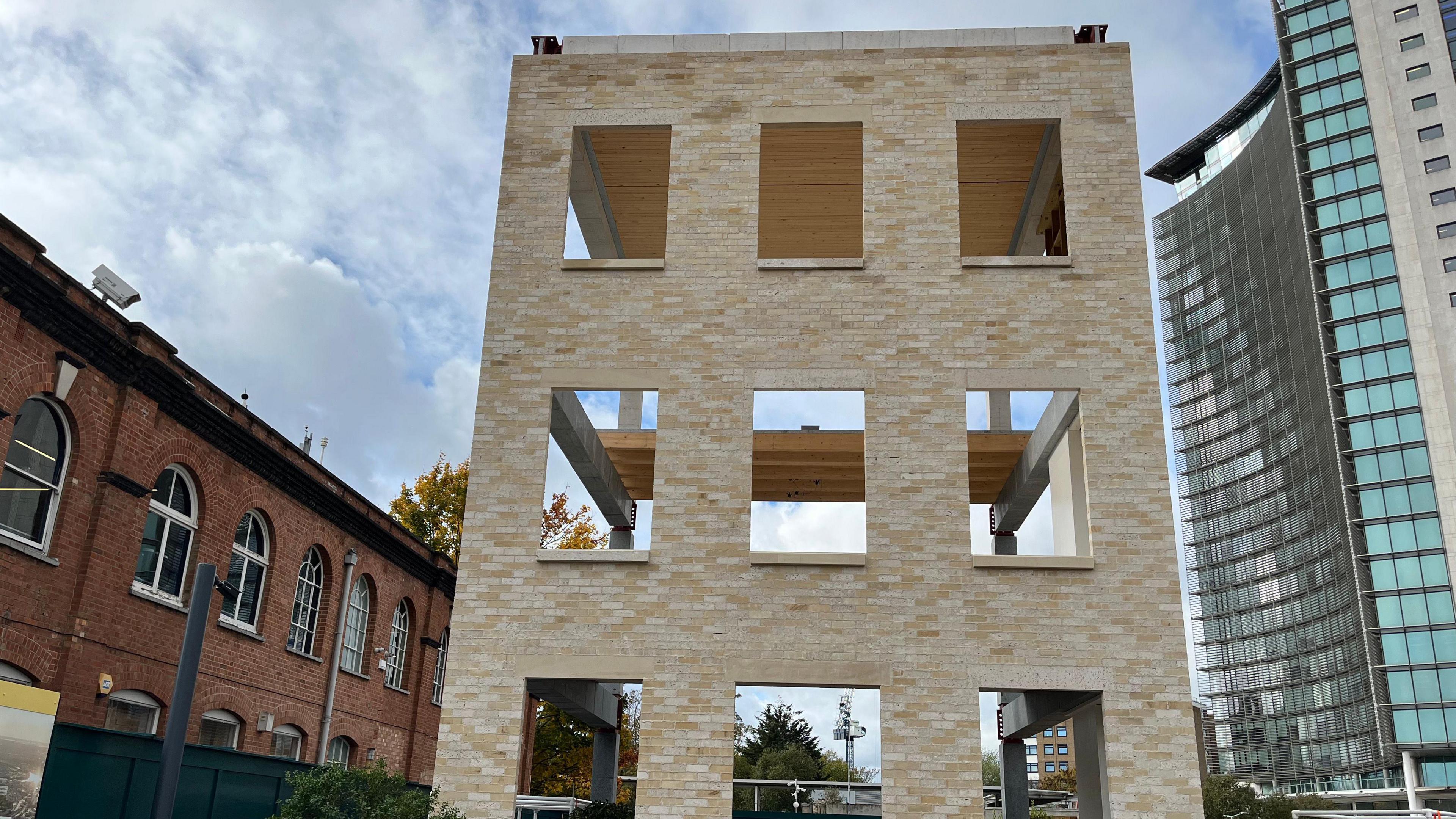
Listen to the best of BBC Radio London on Sounds and follow BBC London on Facebook, external, X, external and Instagram, external. Send your story ideas to hello.bbclondon@bbc.co.uk, external